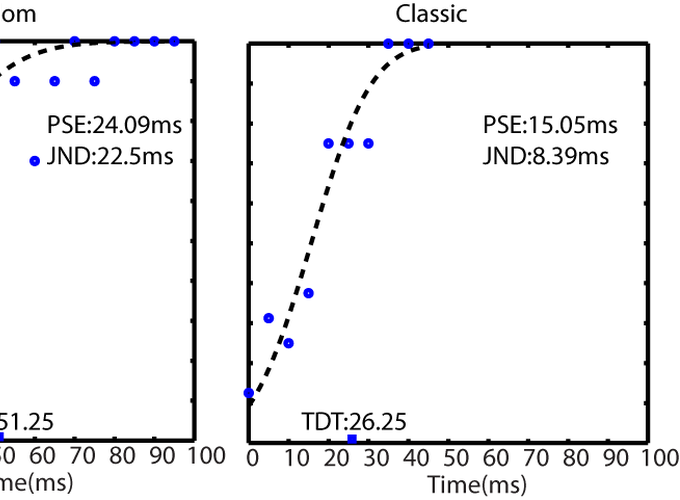A comparison of stimulus presentation methods in temporal discrimination testing

A comparison of stimulus presentation methods in temporal discrimination testing
Abstract
The temporal discrimination threshold (TDT) is the shortest time interval at which an individual detects two stimuli to be asynchronous (normal=30–50ms). It has been shown to be abnormal in patients with disorders affecting the basal ganglia including adult onset idiopathic focal dystonia (AOIFD). Up to 97% of patients have an abnormal TDT with age- and sex-related penetrance in unaffected relatives, demonstrating an autosomal dominant inheritance pattern. These findings support the use of the TDT as a pre-clinical biomarker for AOIFD. The usual stimulus presentation method involves the presentation of progressively asynchronous stimuli; when three sequential stimuli are reported asynchronous is taken as a participant’s TDT. To investigate the robustness of the ‘staircase’ method of presentation, we introduced a method of randomised presentation order to explore any potential ‘learning effect’ that may be associated with this existing method. The aim of this study was to investigate differences in temporal discrimination using two methods of stimulus presentation. Thirty healthy volunteers were recruited to the study (mean age 33.73±3.4 years). Visual and tactile TDT testing using a staircase and randomised method of presentation order was carried out in a single session. There was a strong relationship between the staircase and random method for TDT values. This observed consistency between testing methods suggests that the existing experimental approach is a robust method of recording an individual’s TDT. In addition, our newly devised randomised paradigm is a reproducible and more efficient method for data acquisition in the clinic setting. However, the two presentation methods yield different absolute TDT results and either of the two methods should be used uniformly in all participants in any one particular study.